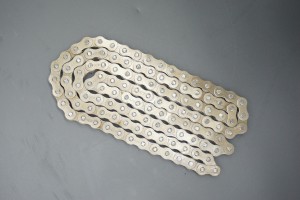Roller chains are an integral part of industries ranging from automotive to manufacturing. They are used in a variety of applications including conveyor systems, bicycles, motorcycles, and even heavy machinery. Understanding the performance of a roller chain, especially its speed, is critical to ensuring efficient operation and preventing accidents. In this blog post, we’ll explore the concept of “feet per minute” and reveal how roller chains handle different speeds.
Learn about roller chains:
Roller chains consist of a series of interconnected cylindrical rollers mounted independently on inner and outer plates. These chains transmit mechanical power from one place to another by wrapping around sprockets. The sprockets in turn convert the rotational motion of the drive components into linear motion, effectively driving the system.
Velocity Measurements: Feet Per Minute:
When it comes to roller chains, it is important to know how fast they will run for a number of reasons. One of the most common ways to measure roller chain speed is in the unit “feet per minute” (FPM). This unit represents the straight-line distance traveled by a point on a roller chain in one minute.
Factors affecting the speed of roller chains:
1. Material and Construction: The type of material used in the construction of a roller chain plays a vital role in determining its speed capability. High-quality roller chains typically feature hardened steel components to withstand high speeds and reduce wear.
2. Lubrication: Sufficient lubrication is essential to keep the roller chain running smoothly. Insufficient lubrication increases friction, causing heat to build up and putting unnecessary stress on the chain. Proper lubrication can prevent premature system failure and increase the speed capability of the roller chain.
3. Tension and Alignment: Maintaining optimal tension levels and proper alignment is critical to smooth chain operation. Too much tension can cause excessive wear and result in reduced speed capability, while poor alignment can put unnecessary stress on the chain, making it prone to failure.
Safe operating speed for roller chains:
While roller chains have excellent speed tolerance, staying within safe operating limits is critical to ensuring optimum performance and service life. While different roller chains have different speed capabilities, it is generally recommended that speeds not exceed 5000 FPM.
It is worth noting that too high a speed will result in increased noise, vibration and accelerated wear. Therefore, the manufacturer’s guidelines and specifications must be consulted to determine the recommended speed limit for a particular roller chain.
Roller chains are general-purpose mechanical components used in a wide variety of industries. Understanding the concept of “feet per minute” and the speed limits of roller chains is critical to maintaining the overall efficiency and reliability of the systems in which they are used.
By paying attention to factors such as materials, lubrication, tension and alignment, we can ensure that our roller chains operate within safe limits. Remember to consult the manufacturer’s guidelines and always prioritize the safety and longevity of your roller chain system.
Post time: Jul-13-2023

